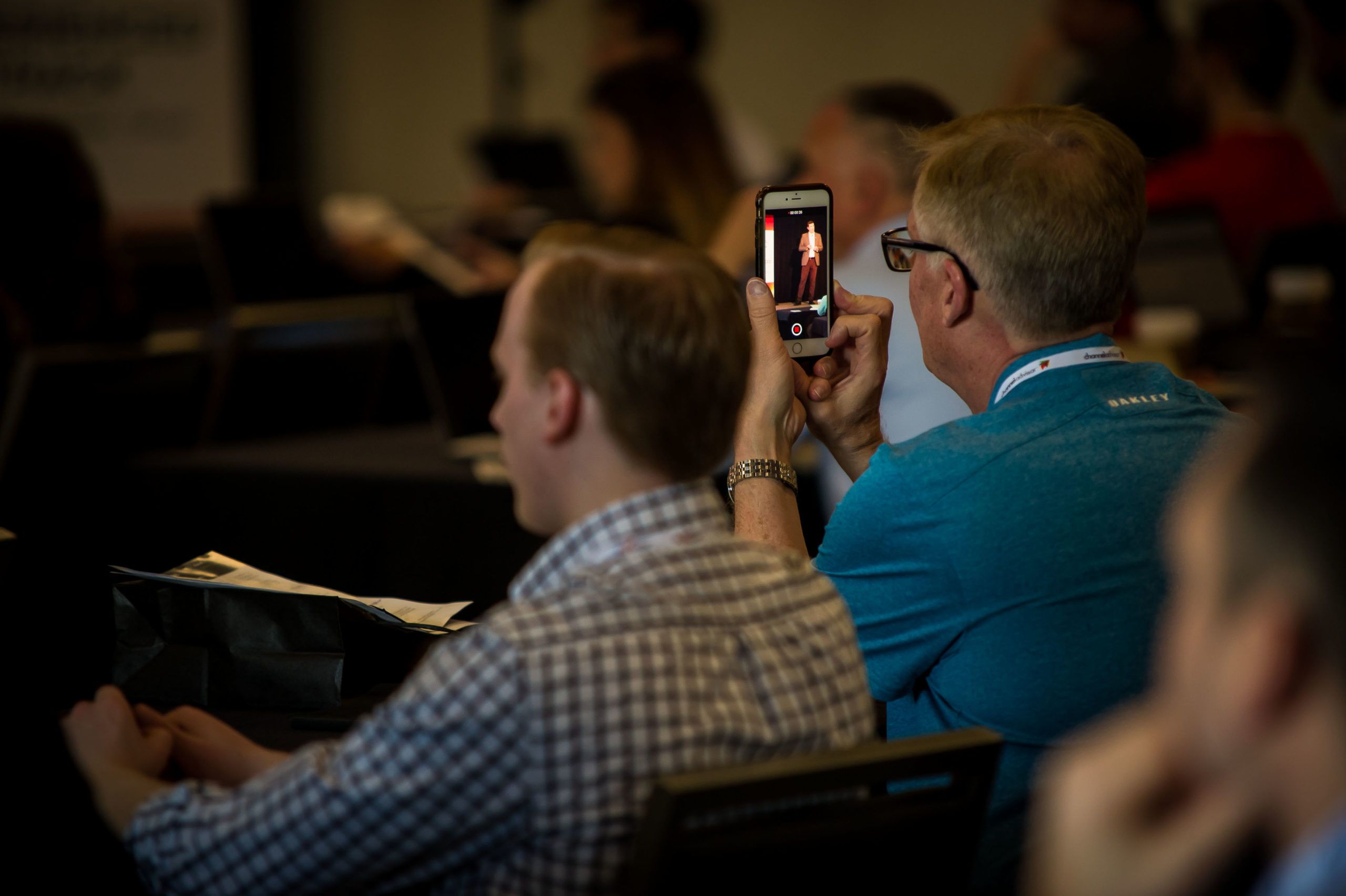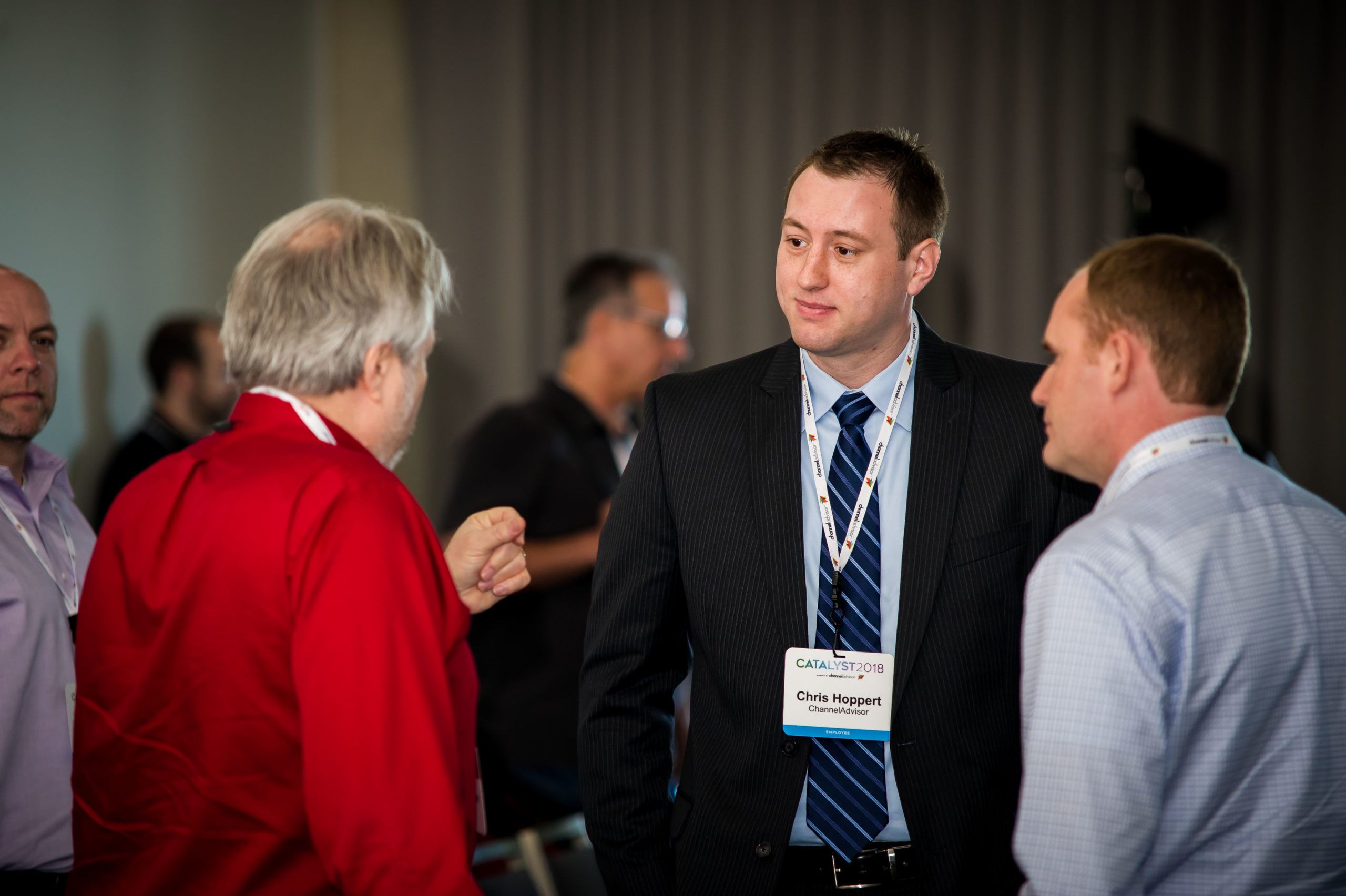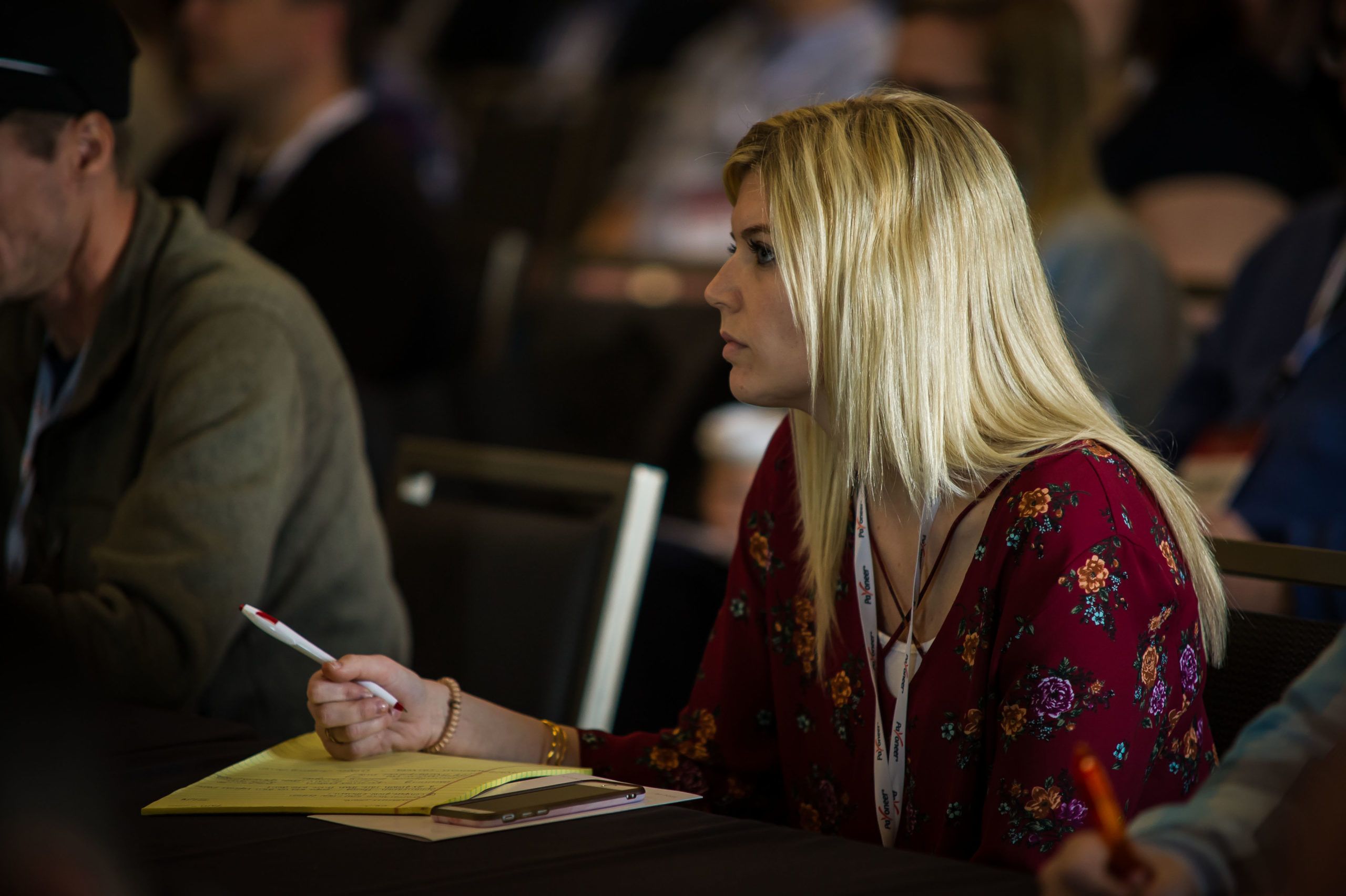Sellers have a lot of choices in 2018.
Should you allocate more budget to advertising and less to fulfilling? Should you expand overseas? Should you leverage Fulfillment by Amazon (FBA) or pack products yourself? Should you sell direct to consumers or leverage retailers?
Rithum CEO David Spitz introduced this theme in a very direct way to a packed, early-morning house. Rather than diving straight into the current state of the e-commerce industry, he started by asking the audience what they’d like to hear via the Catalyst mobile app.
That’s right — Catalyst attendees could choose what David would talk about.
“The e-commerce landscape is changing so rapidly that we thought it would be a little more dynamic if we let you choose the topics in real time,” he said.
The audience had seven topics to choose from:
- Amazon
- China
- Brands
- Fulfillment
- Data
- Voice Commerce
- Blockchain
So… which topics won? First up was Amazon, since “no e-commerce keynote is complete without talking about Amazon.”
Blockchain, data and voice commerce were next. Here are a few highlights:
- As Amazon continues to disrupt numerous industries, sales, digital marketing and fulfillment will all kick into even higher gear. David advised attendees to be ready for heightened competition within Amazon advertising in particular: Already, retailers and brands that leverage Amazon Marketing Services are growing 63% faster than those that don’t, according to one Rithum study in 2017.
- Blockchain is another important trend to watch and prepare for. The same technology behind cryptocurrencies like Bitcoin is also suited to solve issues around supply chain and logistics. “You need to be able to move quickly and identify trends like these…and have your company adapt to them,” David told the audience.
- And then there’s data. Of all the data collected in human history, 90% was generated over the past two years. “Never before have we had the capacity to gather and analyze so much,” David said. In other words: Spreadsheets will no longer cut it. Having the right tools and technology is a must.
- Voice Commerce is reshaping how brands are discovered. Though still in its infancy, voice-assisted shopping is proving to be “the Buy Box on steroids.” So far, 85% of consumers purchase Amazon’s first product suggestion when using voice-activated shopping assistants. So if you don’t already own a smart speaker to see what your customers are experiencing, David advised attendees, now’s the time.
David capped his keynote with exciting news of upcoming updates to the Rithum platform, including:
- Demand Forecaster to do more accurately predict upcoming sales volume
- Performance-Based Pricing to create dynamic pricing based on current demand
- First-Party Order Support for wholesale and drop shipping
- Profitability Reporting that turns mission-critical data into review-ready reports…
…plus expansion to new marketplaces including Houzz and Walmart Canada, as well as integration with Google Shopping Actions and new fulfillment capabilities following Rithum’s acquisition of HubLogix.
Next up, the stage gave way to a lively talk with one of the world’s foremost industry futurists.


The Retail Prophet Speaks
When a trusted retail futurist offers a crystal ball view into the future of e-commerce, you listen. And Doug Stephens was no exception. Widely known as the “Retail Prophet,” Doug came to Catalyst to offer his vision of what’s to come — and what sellers can do to prepare for it.
His keynote did not disappoint. Pulling from the lessons he encountered when writing Reengineering Retail — his five-star book on the profound changes still in store for retailers and brands — Doug gave attendees a new working model to match the current industry landscape as it continues to evolve.
“We’re just at the end of the very beginning of e-commerce growth,” he said.
That means it’s time to innovate like never before — and be first to take risks. From creating surprising and sensory customer experiences to tipping the traditional marketing funnel on its side, Doug left attendees with a lot of unconventional advice to consider.
“You won’t need people like me to tell you about the future,” he proclaimed, “because you will be creating it.”




Workshop Wisdom…
After the morning keynotes wrapped up, it was time for attendees to roll up their sleeves and get to work in the day’s workshop sessions.
From 1P and 3P best practices for brands to optimizing the consumer journey, every session seemed to fill a current need. Speakers were engaging, audiences were inquisitive, and everyone came away with a wealth of new knowledge to take home.
…and More Killer Keynotes
As if that weren’t enough, there were still two more amazing keynotes to wrap up the day.
First, the Senior VP of Customer Channel Marketing at FedEx, Scott Harkins, reminded everyone that you can’t have successful e-commerce without successful fulfillment. Case in point: After one Rithum customer turned to FedEx to get its deliveries to doorsteps faster, the seller’s eBay sales doubled in less than a month.
Evolution is vital in e-commerce, and it’s most important in the fulfillment and shipping sector. As we heard many times today, fulfillment has become the next battlefield, and retailers and brands need a world-class fulfillment network if they want to survive.
When your job is to sell and market, Scott told attendees, fulfillment isn’t likely to be a core area of expertise. That’s why FedEx is so laser-focused on developing its shipping and delivery services, with a goal of freeing brands and retailers to focus on growth. He encouraged those in the room to leverage expanding options such as Delivery Manager and an extended network of pickup locations.
By the time Maureen Mulligan L2’s Chief Strategy officer took the stage, it was time to make things actionable.
“There’s so much data,” she said, “so let’s boil this down to what you can actually do with it.”
And she wasn’t kidding about data — it wouldn’t be an L2 presentation without a deluge of industry facts, stats and examples. In addition to providing a snapshot of where we are as an industry, Maureen wanted attendees to take a step back and understand the forces driving trends and the major players we commonly refer to as disruptors (aka, “the innovation class”).
Maureen shared ways to make big data small, with a remarkable assortment of real-world examples of brands that are:
- Embracing the need for speed through product innovation
- Uncovering actionable data to capture more market share in real-time
- Using organic (“people”) intelligence to really know customers
- Accurately aligning the business with where customers shop
- Embracing the importance of storytelling to connect with consumers
In the end, though, she said that the specific methods that work for one company, do not work for another. She urges businesses to take more of a macro view and chart their course based on inspiration, not copycat marketing campaigns. “It’s better to copy strategy, not tactics.”
All Hands on Deck
The Catalyst Party is always the high watermark of the conference, and this year’s party took it literally.
After a full day of learning and networking, attendees took to the water and boarded the USS Midway to socialize, enjoy a couple cocktails and show off their latest (sometimes questionable) dance moves.
Against a picturesque backdrop of the San Diego skyline and a setting Pacific Coast sun, everyone was able to take a much-needed break and decompress from the long day. Old conversations continued, new partnerships were forged and a few flights were simulated.
Of course, Catalyst won’t be over until Scott Stratten speaks, Kara Swisher takes the stage and Lila Snyder sends us packing… so we’ll see you tomorrow for another action-packed day!
